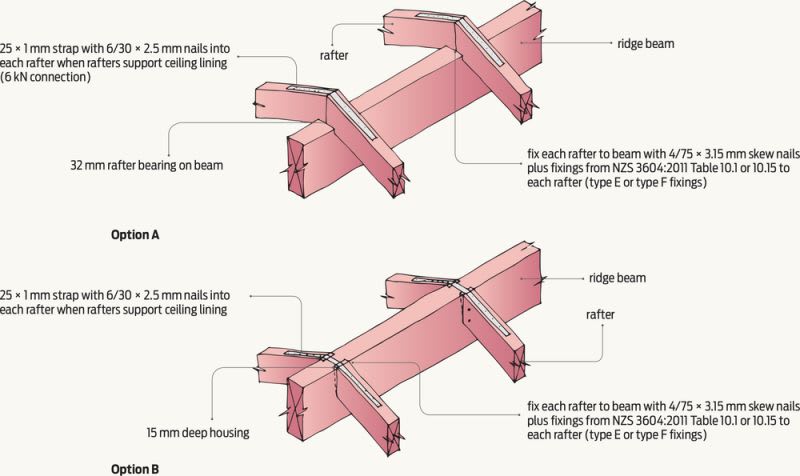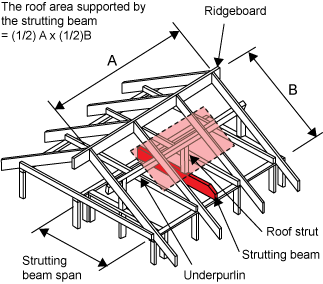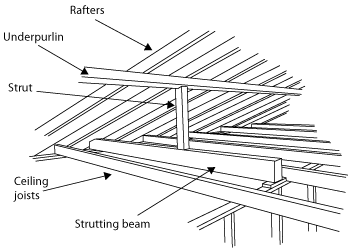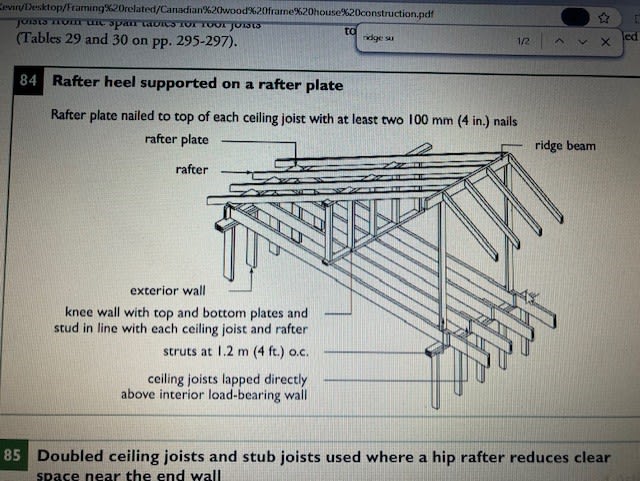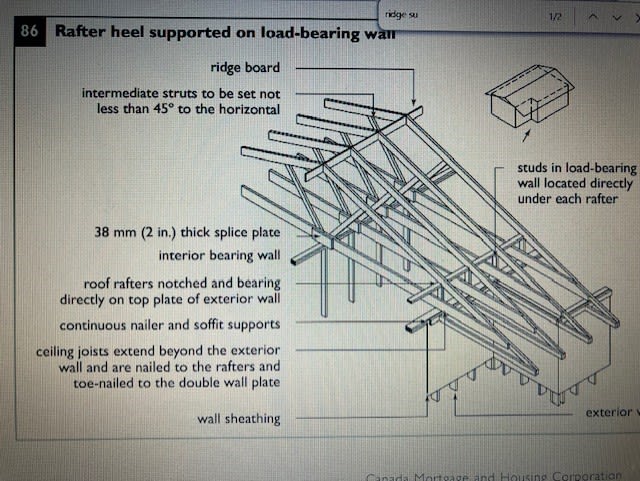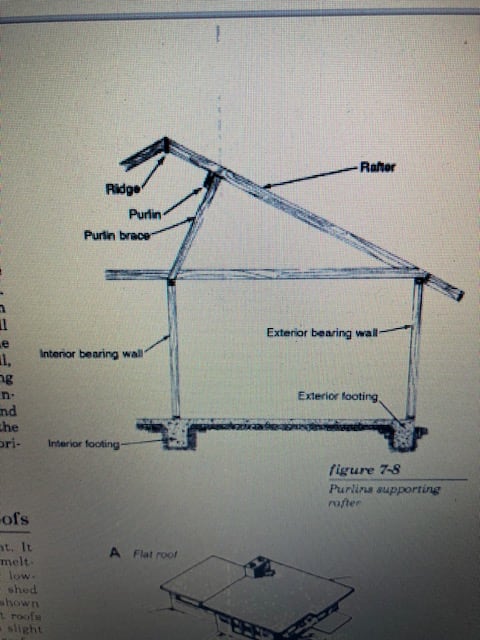Hi, thanks to anyone in advance for reading and offering their suggestions, and/or opinions on this particular question. Rudimentary Photos included for clarity.
I am in the process of renovating my parents old house and am trying to re-support certain areas of the home. The house is completely gutted to the framing members, so accessibility is of no concern. The rafter and joists spans are all code compliant. The purpose of this proposition is for load sharing, which is required for details not included, as they will only muddy the waters, and without drawings would be hard to conceptualize.
I have had an engineer size the ridge beam (LVL) for this particular area, however, I do not intend to use this as a ridge beam. For me to use this as a ridge beam would suggest that I want a cathedral ceiling in this area, which I do not. I do not have the insulation depth in the roof rafters to satisfy code requirements even if that were the case. Re-framing the roof is not something I want to do. So this is where my question lays, I would like to use this beam in the attic space, raised slightly above the ceiling joists, with framing members (struts) extending upwards at an angle of no more than 45' to support the roof rafters via the purlins and strong backs. The struts extending off the beam will be 2x6's supporting each opposing rafter, 16" O.C at a height/length of about 4 ft. The other option would be to extend a strut vertically to support each opposing rafter. What are the differences in how the load would be shared by the support methods I would like to employ, versus the LVL being in the ridge, as a ridge beam? Would the load transferred to the beam be equal in either scenario? Would it be the tributary area of where my strut lands on the rafter? The tributary area for the strut if it was at a 45' angle to the beam would be about 120 square ft. The bearing points are the same regardless of the placement of the beam. The dimensions of this area is 30 ft x 22 ft. Max Span for the LVL that was sized was 13 ft 6 inches bearing to bearing. If this idea sounds dumb, please explain your reasoning why, lol, or if more information is required please request it.
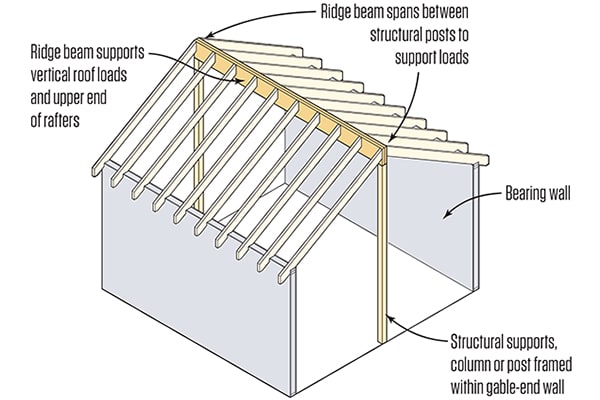
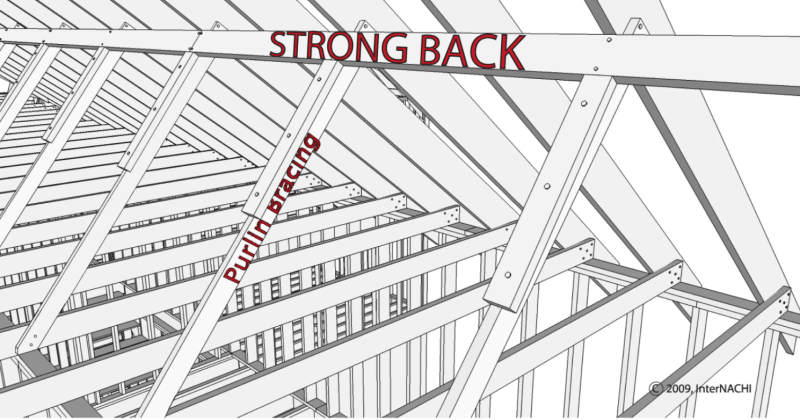 [
[
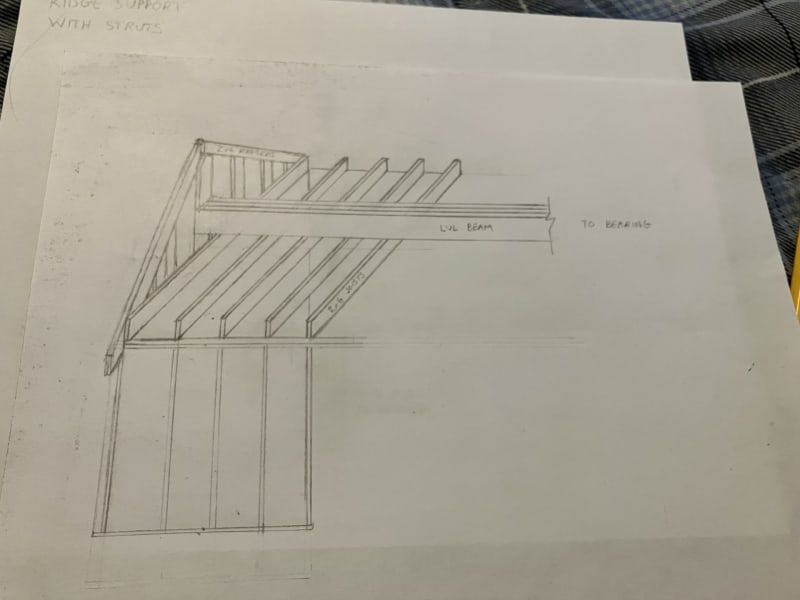
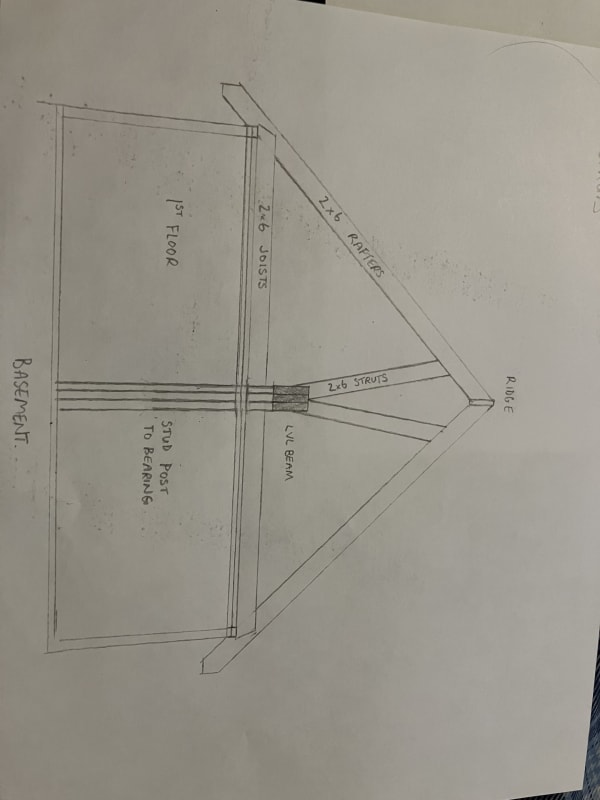
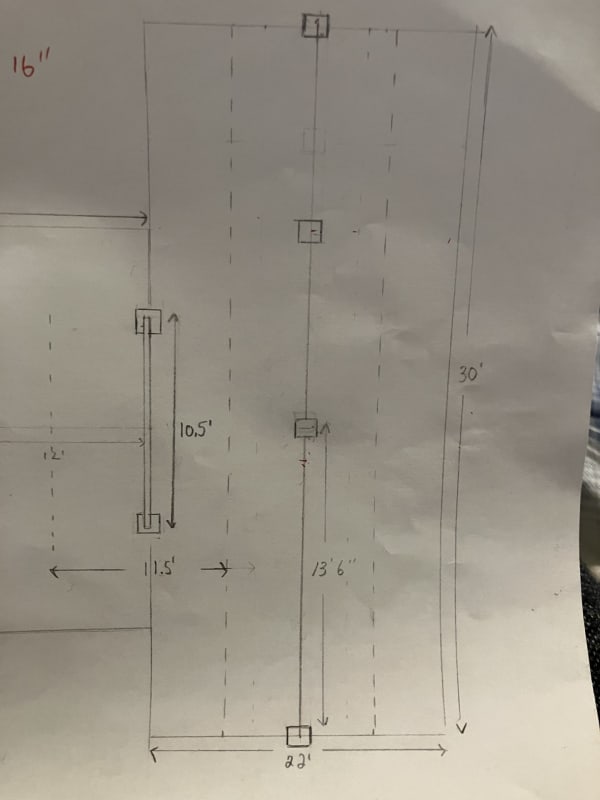
I am in the process of renovating my parents old house and am trying to re-support certain areas of the home. The house is completely gutted to the framing members, so accessibility is of no concern. The rafter and joists spans are all code compliant. The purpose of this proposition is for load sharing, which is required for details not included, as they will only muddy the waters, and without drawings would be hard to conceptualize.
I have had an engineer size the ridge beam (LVL) for this particular area, however, I do not intend to use this as a ridge beam. For me to use this as a ridge beam would suggest that I want a cathedral ceiling in this area, which I do not. I do not have the insulation depth in the roof rafters to satisfy code requirements even if that were the case. Re-framing the roof is not something I want to do. So this is where my question lays, I would like to use this beam in the attic space, raised slightly above the ceiling joists, with framing members (struts) extending upwards at an angle of no more than 45' to support the roof rafters via the purlins and strong backs. The struts extending off the beam will be 2x6's supporting each opposing rafter, 16" O.C at a height/length of about 4 ft. The other option would be to extend a strut vertically to support each opposing rafter. What are the differences in how the load would be shared by the support methods I would like to employ, versus the LVL being in the ridge, as a ridge beam? Would the load transferred to the beam be equal in either scenario? Would it be the tributary area of where my strut lands on the rafter? The tributary area for the strut if it was at a 45' angle to the beam would be about 120 square ft. The bearing points are the same regardless of the placement of the beam. The dimensions of this area is 30 ft x 22 ft. Max Span for the LVL that was sized was 13 ft 6 inches bearing to bearing. If this idea sounds dumb, please explain your reasoning why, lol, or if more information is required please request it.






